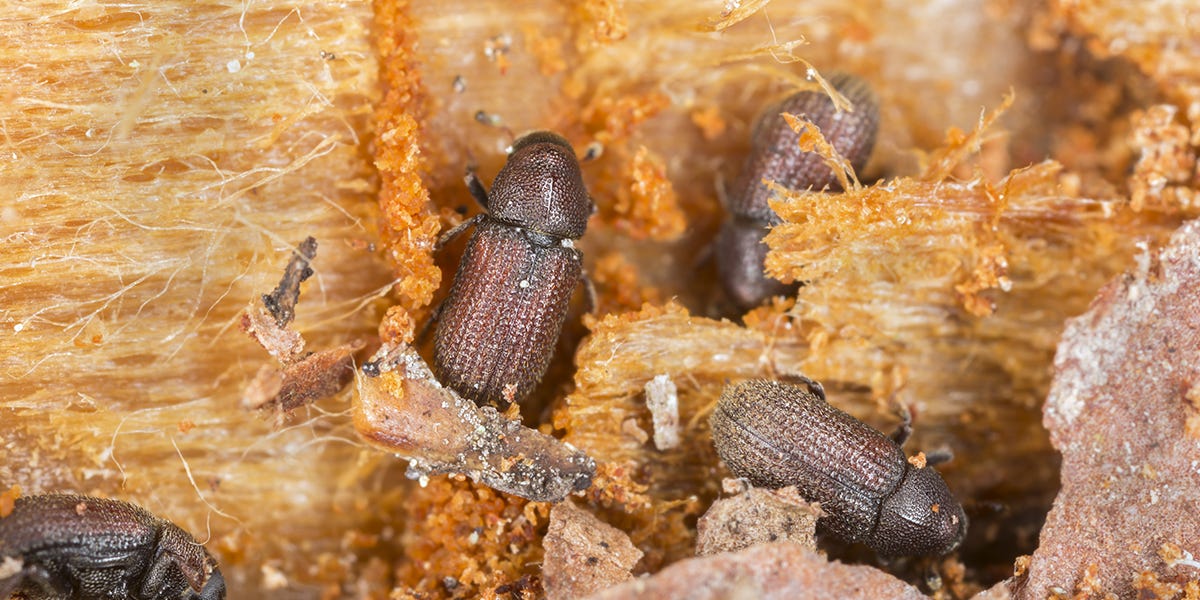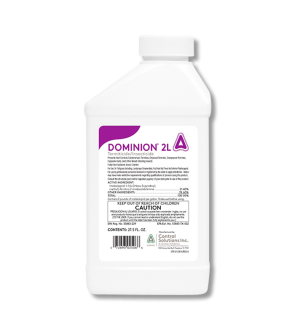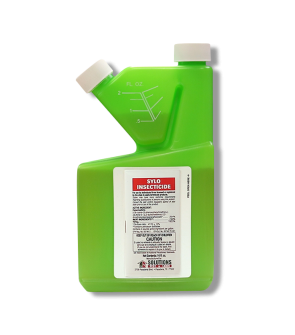How to Get Rid of Tree Borers
Most Effective Products
Tree Borer Control: How to Get Rid of Tree Borers
This page is an expert guide on getting rid of tree borer infestations using the products and methods suggested by our experienced pest control specialists. Follow this guide and use the recommended products and we guarantee you will be successful in eliminating tree borers from your property.
Having a tree on your landscape can provide shade and improve the overall look of your garden, but at the same time, it could also be at risk of damage by a group of wood-loving pests known as Tree Borers.
Tree Borers is a catch-all term used to describe a number of destructive insect species who share a common characteristic of boring into tree trunks and branches and being a threat to the tree's overall health. This is most commonly used with beetle species, so as not to be confused with termites.
Most tree borers are the larval stages of certain beetles and moths, others do damage as adults such as the bark beetle. No matter the type, tree borers need to be eliminated quickly to save your infested tree or else you may have to remove the tree entirely.
In this guide, we will show you what you can do to get rid of tree borers and what cultural practices you can use to keep tree borers from targeting your landscape tree.
Identification

Before you can carry out a treatment program, you need to first be sure that you are dealing with Tree borers and not some other pest. It helps to know what Tree Borers look like so you can accurately identify them.
- Tree borers are not a specific insect type, but rather is a name to represent a group of insects that lays its eggs in the bark of a tree trunk and whose larvae eats on the wood and decays it from the inside. This rots not only the tree but also the entire landscape in some cases.
- Tree borers could be bark beetles, clearwing moths, or flat-headed borers among others, but regardless of the species, they all bore into trees and are a hazard to its health.
- To help you identify which species you have, factors like your tree species and the symptoms that you observe can help you narrow down which specific insect is doing the damage.
- For example, tiny holes in trunks may be the result of bark beetles; larger holes with sawdust-like residue is a clear sign of clearwing moth larvae; wet spots and dark stains in the shape of the letter D or number 0 may be the work of flatheaded or roundheaded borers.
Use the image and description above to help you to correctly identify Tree Borers. If you are not entirely sure, contact us and one of our pros will help you to correct identify Tree Borers on your property.
Inspection

After you have confirmed that you are dealing with Tree Borers, you can then proceed with an inspection. During this phase, you will need to find out where the Tree Borers are active and how severe of an infestation is present. This will help you to determine where to focus your Tree Borer treatment applications.
Where To Look
Focus your inspection on the trees on your property. Pay particularly close attention to tree trunks and tree branches. In some cases, the Tree Borer damage may be so severe that the tree cannot be salvaged and you may have to remove the tree.
What To Look For
As mentioned in the identification section, you should be looking for signs of tree damage or any active Tree Borers. Look for holes in the trunks and branches, remnants of sawdust-like frass, dead tree limbs and cracked bark. You should also observe and note conditions of the tree and landscape and whether there has been a lot of stresses that have impacted the tree (drought, compacted soil, injuries etc.) and made it favorable for tree borers to take over as they rarely infest healthy trees.
Treatment
If you have confirmed that tree borers are infesting your tree and wish to try and salvage your tree, you will need to conduct a treatment using professional products.
We recommend first using a contact insecticide such as Sylo Insecticide to the tree trunk, limbs, and bark to kill any active borers are inside the tree. This is a pyrethroid that delivers a quick knockdown of insects on trees.
Once the active borers have been killed off, we recommend applying Dominion 2L via soil treatment around the tree for continued protection against tree borer damage and reducing the likelihood of future infestations. Dominion 2L is a systemic insecticide which means the product is absorbed in through the roots and to the entire tree to control tree borers.
Step 1: Sylo Insecticide Treatment

Sylo Insecticide is a synthetic pyrethroid insecticide that contains the active ingredient Cypermethrin and serves as a good contact insecticide that can prevent infestation of tree borers to infested trees and shrubs. Timing is crucial as it is best to treat trees early on in an infestation to attack the newly-hatched tree borer larvae before they begin tunneling into the bark.
Measure the square footage of the treatment area to help you determine how much Sylo Insecticide you need to mix. In a sprayer, dilute 0.33 to 0.65 fl. oz. per 1,000 sq.ft. in a volume of water sufficient for uniform coverage such as 3 to 20 gallons. Once you have calculated and mixed the appropriate amount of Sylo Insecticide in a sprayer, shake the sprayer well and you're ready to treat.
Apply over the tree trunks, trigs, and branches on a fan spray setting but not to the point of runoff. If you see any holes or cavities in the wood, spray them directly via pin stream setting. You want to saturate the openings and contact as many insects as possible.
Step 2: Soil Treatment with Dominion 2L

Once the tree has been treated, we recommend a soil treatment with Dominion 2L. Dominion 2L is a systemic insecticide meaning that it when applied to the soil, it will be taken up into the tree roots and help to control any tree borer pest that tries to burrow or feast on the tree. Measure the diameter of your tree before treating.
Dilute Dominion 2L at a rate of 0.1 to 0.4 fl. oz. per inch of trunk diameter. So for example, if your trunk's diameter is 15 inches you will need to mix 1.5 to 6 fl. oz. of Dominion 2L per 5 gallons of water. Mix it in a sprayer and apply uniformly as a drench around the base of the tree directing the application to the root area.
Prevention

After treatment has completed, tree borers should no longer be infesting your tree but you will need to make sure they do not reinfest. Here are some practices we suggest:
Replacing the tree
If the damage of the tree is quite extensive the only way to take care of the infestation is to remove the whole tree from its roots and replace it with new one. Replanting a new one and protecting it with preventive treatments of Sylo Insecticide and Dominion 2L may be the only way to control the damage.
Mulching around the tree
Place mulch, supplemental water and fertilizers around the tree at times it helps in preventing the tree borers from causing harm to the tree. This will help in controlling the damage being caused by borers. Use proper organic compost and fertilizers that are nitrogen-free. Clean up all the debris.
Pruning the trees
It is best to cut off the branches and nearby mulches, grass, and cut all the unwanted decayed leaves and branches as short and trim as possible. It will make it unappealing and more difficult for the tree borers to infest a trimmed tree.
While pruning cut off the infected branches, the crossed branches and cut the branches laterally 6 inches deep till you reach the disinfected portion of the branch. Dip cloth in alcohol and rub it all over the cuts and trunk it prevents re-infestation from occurring. Plant other flowers during winter to avoid attracting the borers and keep the borers away.
Sealing with pruning paste
Apply or fill the cuts and from the pruning with prune paste. A batch of old paint tree antiseptics, petroleum and diatomaceous earth-based products all can be used as prune paste. Sealing the saps and cuts heals the wounds of trees more quickly and prevents the tree borers from entering inside the trunk to damage the trunk.
Key Takeaways
What are Tree Borers?
- Tree Borers are a destructive group of pests known to destroy wood as adults or lay eggs inside of trees where destructive larvae hatch and burrow and cause damage.
How to Get Rid of Tree Borers
- Using a combination of contact insecticide treatment with Sylo Insecticide and a soil drench treatment of Dominion 2L can help to eliminate tree borers from your tree.
Preventing Tree Borer Reinfestation
- Practice maintenance of your trees with pruning and mulching to prevent reinfestation. In some cases when there is extensive damage, it may be better and safer to replace the tree entirely then use the Sylo Insecticide and Dominion 2L as preventative measures to protect your new tree.













































































































































































































































































































































































































































































































































